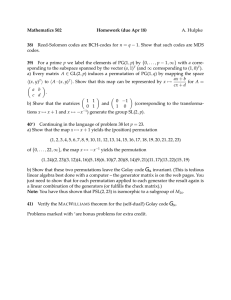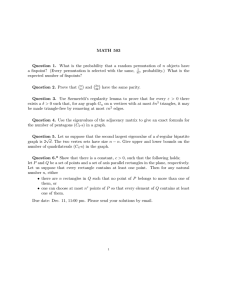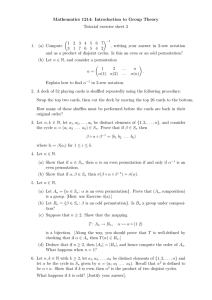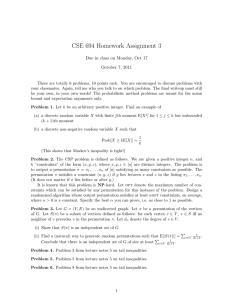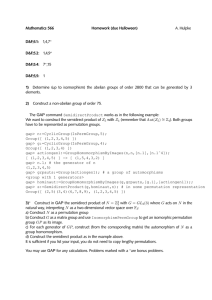PermTests.ppt
advertisement
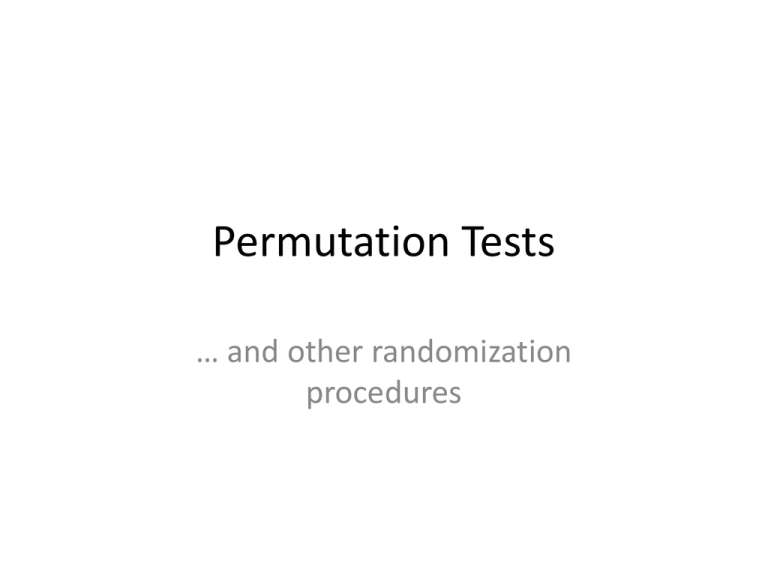
Permutation Tests … and other randomization procedures What do we need for a statistical test? • 1) A test statistic (e.g. t-statistic, correlation) that measures departures from the hypothesis • 2) A direction of the test statistic which is in favor of the alternative (e.g. reject when large) • 3) Knowledge of the distribution of the test statistic when the hypothesis is true This last item is problematic when assumptions regarding the distribution are questioned Permutation tests Permutation tests do not need to make much in the way of distributional assumptions – just what shuffling of the data would look the same when the hypothesis is true. Then we can just do a number of random shufflings of the data and see how extreme the test statistic might be under the permutation distribution. Permutation tests -- procedure • Compute the test statistic for the original data T0 = T(original data) • Generate new samples i=1,…,N of the data Ti = T(each new permutation i) • Count how many Ti’s are bigger (if we reject for large T) than T0, so that the empirical pvalue is #(Ti > T0)/N • … related to bootstrap and jackknife Permutation distributions • For two-sample t-test – randomly assign group names (say A and B) to the observations • ANOVA – just extend for many groups • Correlation, regression (including logistic regression) – randomly match up x and y



